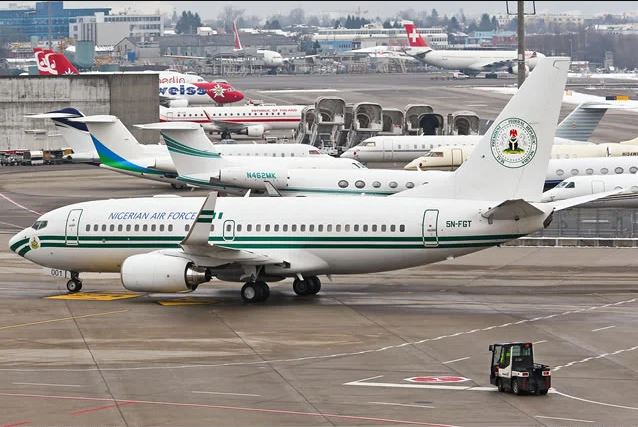
The presidential fleet
A report by The PUNCH has shown that the budgetary allocations for the Presidential Air Fleet have increased from N4.37bn in 2017 to N12.48bn in 2022, according to data obtained from the appropriation bills of the Federal Government within the period under review.
This shows an increase of N8.11bn or 185.58 per cent in five years, signalling a rise in the cost of running the Presidential Air Fleets.
On October 7, 2021, the President, Major General Muhammadu Buhari (retd.), presented the 2022 budget proposal to a joint session of the National Assembly; a whopping N16.39tn, which will send the Federal Government on another borrowing spree of N6.23tn. According to the proposal, N12.48bn was appropriated for the PAFs.
Sunday PUNCH observed that budgetary allocations for the PAFs have been on a steady increase since 2017, except for 2020, where the allocation saw a slight drop by N503.75m against the preceding year.
In 2017, the proposed allocation was N4.37bn. Recurrent expenditure—comprising personnel remuneration and overhead—amounted to N4.37bn. The sum of N399.50m was allocated for capital projects.
In 2018, the proposed allocation was N7.26bn. Recurrent expenditure—comprising of personnel remuneration and overhead—amounted to N4.36bn. N2.90bn was allocated for capital projects. This showed an increase of 66.13 per cent from the previous year.
In 2019, the proposed allocation was N7.30bn. Recurrent expenditure—comprising of personnel remuneration and overhead—amounted to N4.36bn while N2.94bn was allocated for capital projects. This showed an increase of 0.55 per cent from the previous year.
In 2020, the proposed allocation was N6.79bn. Recurrent expenditure—comprising of personnel remuneration and overhead—amounted to N3.02bn while N3.77bn was allocated for capital projects.
The allocation for 2020 dropped by 6.99 per cent compared to 2019. This decrease which was in overhead cost may be connected to the global lockdown that ceased operations for several months.
In 2021, the proposed allocation was N12.55bn. Recurrent expenditure—comprising of personnel remuneration and overhead—amounted to N4.37bn while N8.18bn was allocated for capital projects. This showed an increase of 84.83 per cent from the previous year.
In 2022, the proposed allocation was N12.48bn. Recurrent expenditure—comprising of personnel remuneration and overhead—amounted to N4.35bn while N8.13bn was allocated for capital projects. Personnel remuneration for 2022 increased by N13.5m or 3.1 per cent from the previous year. The allocation for 2022 decreased by 0.56 per cent compared to 2021.
According to the breakdown, Buhari proposed N2bn for the repair of air navigational equipment, N210m for the purchase of Phase 7 Avionics for AW 139 helicopters, N1.6bn for general maintenance, N1bn for aircraft maintenance and N250m for aviation fuel.
Cumulatively, however, the PAFs allocation increased by 185.58 per cent between 2017 and 2022.
The General Secretary of the Aviation Round Table, Olumide Ohunayo, blamed the meteoric rise in the allocations for the PAF, on the age of the aircraft in the fleet. He also blamed the declining value of the naira as well as the “commercial use” of aircraft by the Nigerian Airforce.
In an interview with Sunday Punch Ohunayo said, “The cost will definitely increase over the years because for one, these aircraft are not new. And the older the aircrafts, the higher the cost of maintenance and operation.
“Also, during these past years, terrorism and insecurity have increased in Nigeria which has also affected the cost of insuring the aircraft.
“Lastly, this issue of the naira against the dollar. As the naira keeps falling to the dollar, we will see the rise in cost because most of the cost of training crew, engineers and replacing parts of the aircraft are all in dollars.


